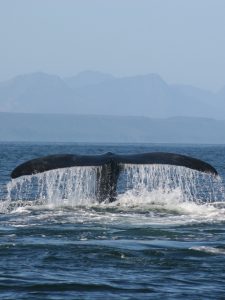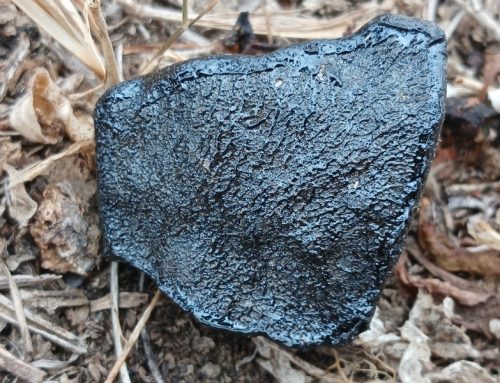 Bottlenose and common dolphins, the endangered Indian Ocean humpback dolphin, southern right, humpback and Bryde’s whales, South Africa has them all, and people come from all over the world to experience them up close in the oceans off our south-east coastline, where boat-based whale-watching operators offer up close encounters with our dolphins and whales.
Bottlenose and common dolphins, the endangered Indian Ocean humpback dolphin, southern right, humpback and Bryde’s whales, South Africa has them all, and people come from all over the world to experience them up close in the oceans off our south-east coastline, where boat-based whale-watching operators offer up close encounters with our dolphins and whales.
Over the past two decades this has developed into an important, growing tourist industry, with new and established operators in marine tourism hotspots such as False Bay, Hermanus, Gansbaai, Knysna, Plettenberg Bay and Port Elizabeth.
In partnership with the Nature’s Valley Trust, this WWF Nedbank Green Trust project, funded by Nedbank, will be the first to assess the impact of South Africa’s boat-based whale-watching industry on the dolphins and whales, as well as the socioeconomic impact of the industry on the towns where the operators are based. Research started in September 2018 and they will be able to talk about the findings and trends early in 2020.
‘Using Plettenberg Bay for our case study, we are looking at the key areas the dolphins and whales use in the bay; where they rest, feed and socialise and where the whale-watching boats intrude in these areas,’ explains the project leader Dr Gwenith Penry, who is also a postdoctoral researcher at Nelson Mandela University’s Institute for Coastal and Marine Research, focusing on the ‘data deficient’ Bryde’s whale.
‘If there are too many operators in one area, the animals could leave. We need to safeguard the animals, develop a spatial plan, and offer feedback to the Department of Environmental Affairs on which parts of the existing regulations need updating and the rate of transgressions in the industry, as there are ethical and less ethical operators.’
To observe how the dolphins and whales use the bay when undisturbed Penry’s team is doing land-based observations using a theodolite – a land surveyor tool with a powerful zoom, providing vertical and horizontal angles that are converted into GPS coordinates to track animals through time and space.
PhD student Minke Witteveen, also registered with Nelson Mandela University, is looking at animal and boat interactions. ‘During the whale-watching high season, from about June to December, operators conduct more trips daily than at other times of the year; this will be our primary season for data collection,’ Witteveen explains. ‘By observing the animals’ undisturbed behaviour, we can assess how this changes when they are approached by boats.’
This includes conducting manipulated boat-based disturbance trials on their research vessel Fluke – a 7,5 m rigid-hulled inflatable boat. Following experimental protocol they will approach the animals, adhering to the legal distance restriction of 50 m for whales and humpback dolphins, and 25 m for common and bottlenose dolphins. They plan to test the difference in the animals’ behaviour under different scenarios, for example when they approach at full speed or at no-wake speed; from different angles and staying for different lengths of time (current regulation is 20 minutes). They will also get closer than 50 m and 25 m to monitor the behavioural changes this may cause.
Cetaceans (whales and dolphins) are curious creatures and may initiate closer contact with vessels, which is always a special and exhilarating experience for vessel passengers. In these instances, operators are still within regulation restrictions, but it is important to ensure that the animals control these interactions and not the operator.
Ultimately, Penry’s team wants to determine what type of approach and encounter leaves the animal undisturbed and implement these as permit restrictions.
‘We’re often asked whether these restrictions are applied when swimming with whales and dolphins, but in South Africa this practice is illegal, both for the safety of the humans and the animals,’ Penry explains. ‘People think dolphins are smiley, friendly animals because this is how they are portrayed in captivity, but they are powerful, wild, top marine predators. If dolphins or whales bump you, they can do a lot of damage.’
In addition to this research, Witteveen will conduct surveys with tourists about their boat-based whale-watching experience in our waters: ‘I’ll be asking about their views of the industry, and whether the experience matched their expectation, because people are so used to seeing National Geographic-type shots that can take years to capture that some think they are going to see the same thing live,’ she explains. We want to determine whether unrealistic marketing is placing unnecessary pressure on the skippers to get too close to the animals to satisfy tourist expectations.’
On the socioeconomic side the team is looking at the direct and indirect benefits of marine tourism activities for the communities and towns that offer these. They will also assess the contribution of marine tourism to employment and hospitality, such as how many accommodation establishments, restaurants and shops depend on it.
‘Our research is truly transdisciplinary, as we collaborate with sociologists, economists and development specialists,’ Penry explains. ‘Our research includes assessing how it would affect the economy of these towns if there were no whale-watching operators. Some of these towns don’t have other industries and it’s important to understand the contribution of marine tourism and to encourage local government to value and support it and play its part in ensuring the industry is ethical and well regulated.’
It’s all part of the greater marine conservation effort, as dolphin and whales are not only important in their own right as key players in marine tourism, but also as key indicator species for overall ocean health because they are at the top of the marine food chain. Research on them informs the decisions and actions required to sustainably conserve our oceans and the communities who rely on them.




